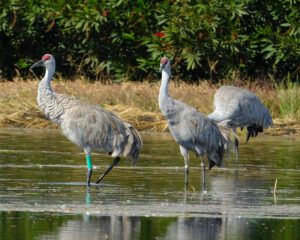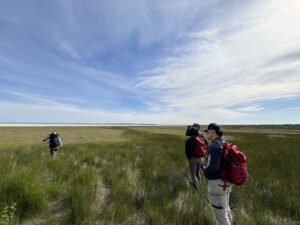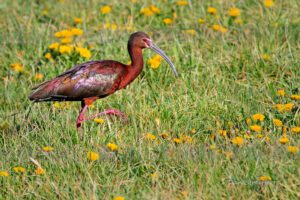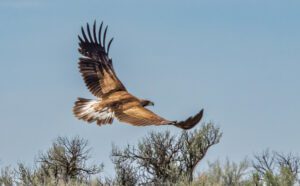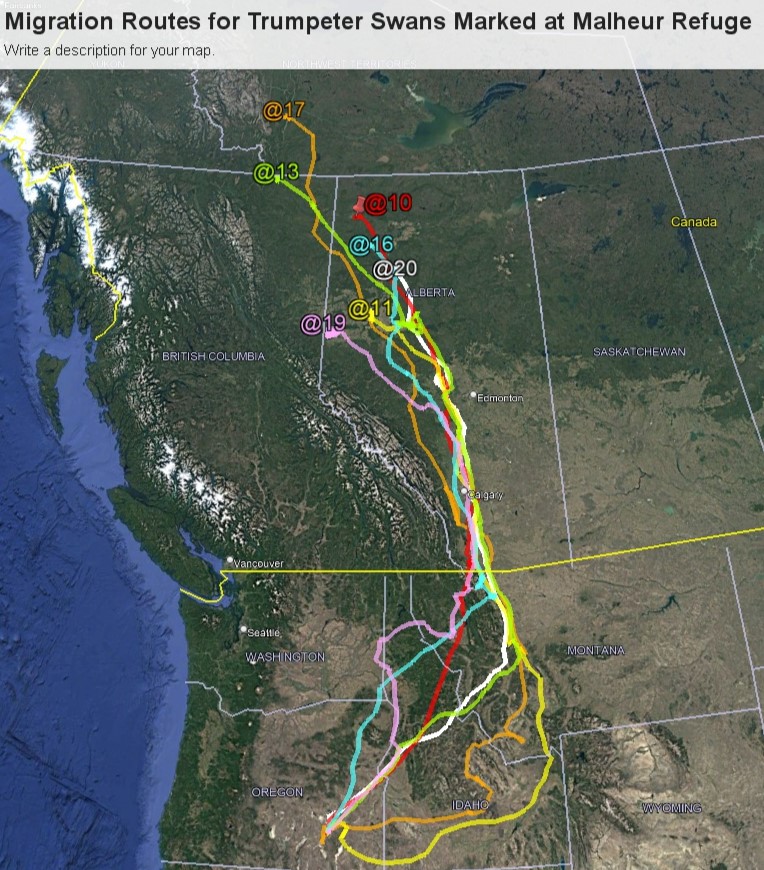Written by Alexa Martinez, Malheur National Wildlife Refuge Wildlife Biologist/Photo of pallid bat by Peter Pearsall
As temperatures begin to rise at Malheur NWR, a diversity of critters come out to explore. Everything from snakes basking on the roads, songbirds nesting in trees and shrubs, or everyone’s favorite: pesky mosquitoes coming out to buzz in your ear. One critter of interest utilizes the resources that the Refuge provides for shelter, food, water and space…BATS!
Visitors may focus on birds when they come to Malheur NWR, but when they walk around and find small piles of pellets near door entrances, they always think we have some sort of mice problem. When they are told that it’s just guano, or bat poop (also known as Malheur’s golden fertilizer!), some are either fascinated that we have bats or are confused because they were not expecting to hear that.
At the Refuge, we take part in the North American Bat Monitoring Program (NABat) to monitor bat activity. NABat was created to assess continental-wide changes in distribution and abundance of bat species. This is an international, multi-agency program that uses four survey methods to gather data: winter hibernaculum counts, maternity colony counts, mobile acoustic survey along roads, and stationary acoustic survey points.
The U.S. Fish and Wildlife Service in Region 1 (R1) Inventory and Monitoring Program (I&M) supports and coordinates NABat by assisting filed staff with conducting acoustic point sampling on National Wildlife Refuges. Malheur NWR has two 10X10 km grid sites where we set 4 bat detectors. These detectors record the echolocation from the bats in the area. We aim to set the detectors in areas where bats are known for; near standing water, trees, building rim rocks, etc. With this in mind, we have chosen Refuge Headquarters Complex and Buena Vista Substation. Both locations have been very promising.
Looking at the results from, 2018 there were at least 12 species of bats detected at Malheur NWR! Out of 20 National Wildlife Refuges in R1, Malheur NWR reported the second highest recording of species richness, with Sheldon NWR having the greatest with 14 species of bats. Richness refers to both the diversity and abundance of the species.
In 2019, we are continuing these surveys in addition to working with the Wildlife Health & Population Lab for Oregon Department of Fish and Wildlife to collect guano and swab samples. Samples are collected where we know there are potential maternal roosting on the Refuge and will be tested for White-Nose Syndrome (WNS). WNS is a disease that affects hibernating bats and is caused by a fungus that appears as a white fuzz on bats’ faces. This disease causes changes in bat behavior, making them more active than usual and burning up valuable fat reserves needed to survive the winter. This deadly disease has killed millions of bats in North America. It is important to stay vigilant, but 2018 results report that Malheur NWR is WNS free!
You can help prevent spread of WNS to unaffected areas! It is important that you DO NOT transport or use any exposed clothing or gear outside of a WNS-affected state or region for use in a WNS-unaffected state or region. To learn more about NABat and WNS, you can visit https://www.nabatmonitoring.org/ or http://www.batcon.org/.



